Best Exercises To Develop Fast Twitch Muscles In Athletes
Mar 26, 2024
Have you ever wondered how top athletes achieve lightning fast speed and explosive power? The answer lies in the development of their fast twitch muscle fibers. Training these fibers is not just for elite athletes, but for anyone looking to improve their performance in sports, fitness, or everyday activities. In this blog post, we will delve into the science behind fast-twitch muscles, their benefits, and how to effectively target them in your training regimen with exercises for fast twitch muscles for optimal performance.
By understanding the role of fast-twitch muscle fibers and incorporating specific exercises for fast twitch muscles into your routine, you can unleash your body’s full potential. Are you ready to unlock your inner athlete and elevate your performance to new heights? Let’s dive into the fascinating world of fast-twitch muscles and discover what it takes to develop these powerhouse fibers.
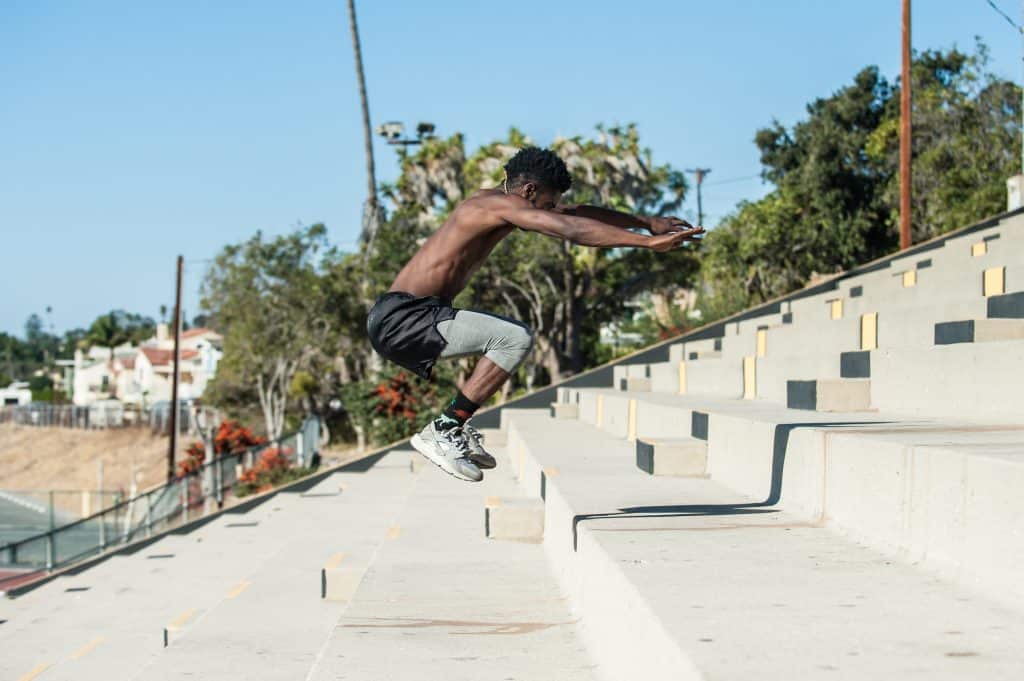
Image 1. Plyometric exercise to build fast twitch muscle fibers | Source
Short Summary
- Fast twitch muscle fibers are responsible for quick power and force production, with two subtypes of Type IIa and Type IIb.
- Training fast twitch muscles offers a variety of physical and mental benefits including improved power, speed, agility, muscular definition & confidence. By adding a couple days of fast twitch training to your current program.
- Plyometric workout drills, heavy resistance training & sprint training can effectively target & stimulate fast twitch muscles. Balanced upper body and lower body training days will give you the opportunity to train different muscle fibers.
The Science Behind Fast-Twitch Muscle Fibers

Image 2. Source
Fast twitch muscle fibers are the key to explosive movements and high power output. In contrast to slow twitch muscle fibers, which are responsible for endurance and maintaining activity over a longer period of time, fast-twitch fibers generate power and force quickly. These muscle fibers can be further divided into two types: Type IIa and Type IIb. Type IIa fibers are more resilient to fatigue and better suited for activities that require a blend of speed and endurance in skeletal muscles, while Type IIb fibers are more potent but fatigue more rapidly.
Think of your muscles like a ponytail made up of hundreds of thousands of individual strands, all moving together in unison. This analogy applies to both fast twitch and slow twitch muscle fibers, with endurance athletes typically having a higher proportion of slow twitch muscles. Genetics play a significant role in determining the quantity of fast twitch muscle fibers in your body, as well as your overall muscle fiber composition.
Types of Fast-Twitch Muscle Fibers
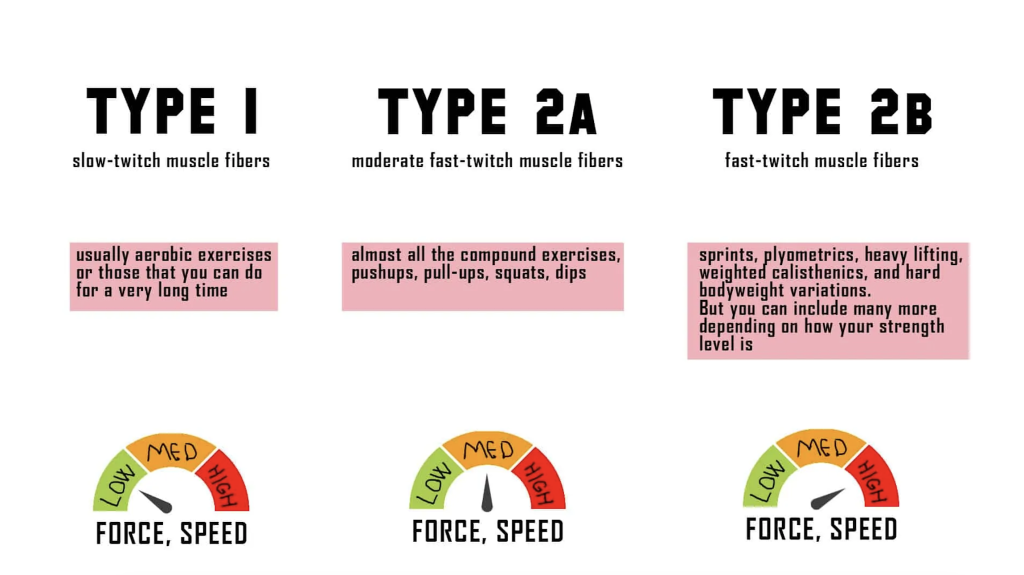
Image 3. Type I muscle fibers are slow twitch while type ii fibers are fast twitch fibers | Source
Fast-twitch muscle fibers, also known as Type II muscle fibers, are classified into two types: Type IIa and Type IIb. Type IIa fibers are intermediate, exhibiting some of the aerobic qualities of slow twitch muscle fibers, while Type IIb fibers are more powerful but more commonly found in animals than humans. Type IIb muscles have a significantly reduced quantity of mitochondria and fatigue more quickly than other types of muscles, including slow twitch muscles.
One effective way to improve explosive and fast twitch capability is through the Box Jump Plyos Workout. This workout involves jumping onto a box, engaging your fast-twitch muscle fibers, and developing your power output. By incorporating plyometric exercises like box jumps into your routine, you can activate and strengthen your fast-twitch muscle fibers for improved athletic performance.
The Role of Genetics in Fast-Twitch Muscles
Genetics play a crucial role in determining the quantity of fast-twitch muscles an individual has. While some people may be naturally fast twitch dominant, others may have a higher proportion of slow twitch muscle fibers, giving them an advantage in endurance activities like long-distance running.
However, this doesn’t mean that individuals with a lower proportion of fast twitch fibers cannot improve their explosive power and speed. An effective way to test whether you are more fast twitch or slow twitch muscle dominant is by establishing a 1 rep max on an elastic lift when strength training, such as squat or bench press, followed by a 5 rep max in 2-3 days for the same lift.
By understanding your muscle fiber composition, you can tailor your training program to target your fast twitch muscles more effectively and optimize your performance in various sports and activities. Make sure when working out you are keeping the actions fast with explosive movement. Doing reps slow will develop more slow twitch muscles.
Benefits of Training Fast-Twitch Muscles

Image 4. Source
Training fast twitch muscles offers numerous advantages for athletes and fitness enthusiasts alike. By enhancing power, speed, agility, and muscular definition, you can gain an edge in dynamic sports and develop a more powerful physique. High intensity exercises can also help build fast twitch muscle fibers and reduce the risk of injury by improving muscle fibers muscle mass and accessibility.
In addition to these performance based benefits, training fast twitch muscles can also provide a mental boost. When learning how to train your body correctly with fast twitch training you will become a more complete athlete and have a better understanding of how to use your body to it’s fullest capability
Top Exercises to Target Fast-Twitch Muscles
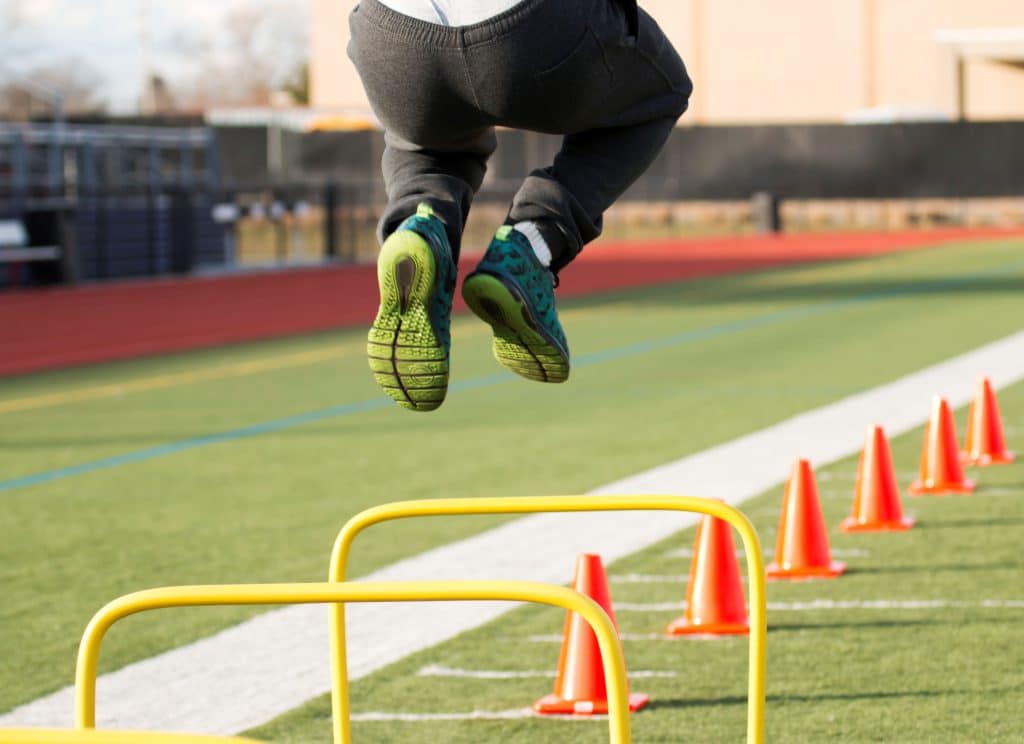
Image 5. Source
To effectively target your fast twitch muscles and enhance their development, it is essential to incorporate exercises that challenge these fibers specifically. To train fast twitch muscle fibers you want to do mostly speed and agility type workouts. This means working on acceleration, deceleration, moving side to side quickly and plyometric exercises.
By learning how to train fast twitch muscles you will develop more type ii muscle fibers and that is key to being a power athletes. Elite athletes train fast twitch to get an advantage on the field or track and become more fatigue resistant while improving overall health.
Plyometric Drills
Plyometrics is a form of exercise that utilizes explosive jumping to stimulate fast-twitch muscle fibers. These exercises can help improve power, explosiveness, and agility, making them an ideal choice for athletes and fitness enthusiasts looking to enhance their fast-twitch muscle development. However, it is essential to ensure that one’s joints are in optimal condition before beginning a plyometrics workout, as these exercises can put stress on ankles, knees, and hips.
Some examples of plyometric drills include box jumps, depth jumps, and medicine ball throws. One particularly effective plyometric exercise is the depth drop to bound, which involves hopping off a box and executing a broad jump forward. The primary emphasis when performing this exercise is to jump forward as quickly as possible, avoiding prolonged contact with the ground or excessive squatting before the jump.
Heavy Resistance Training
Heavy resistance or strength training involves using external resistance, such as weights or resistance bands, to challenge the muscles with heavy loads. A great way to do this is by incorporating olympic lifts such as power. This type of training has been shown to be beneficial in increasing strength and muscle mass, particularly in fast-twitch muscle fibers.
To effectively activate fast twitch muscles during heavy strength training or olympic lifts, it is recommended to lift weights within the range of 55-82.5% of your one rep max. Maintaining proper form is crucial to prevent injury and type ii muscle fibers are targeted.
It is also important to allow for sufficient rest and recovery time between high-intensity training sessions to prevent overtraining and maximize fast-twitch muscle development. If your body is not fatigue resistant you will end up doing endurance training which will make you more slow twitch dominant.
Sprinting and Agility Drills
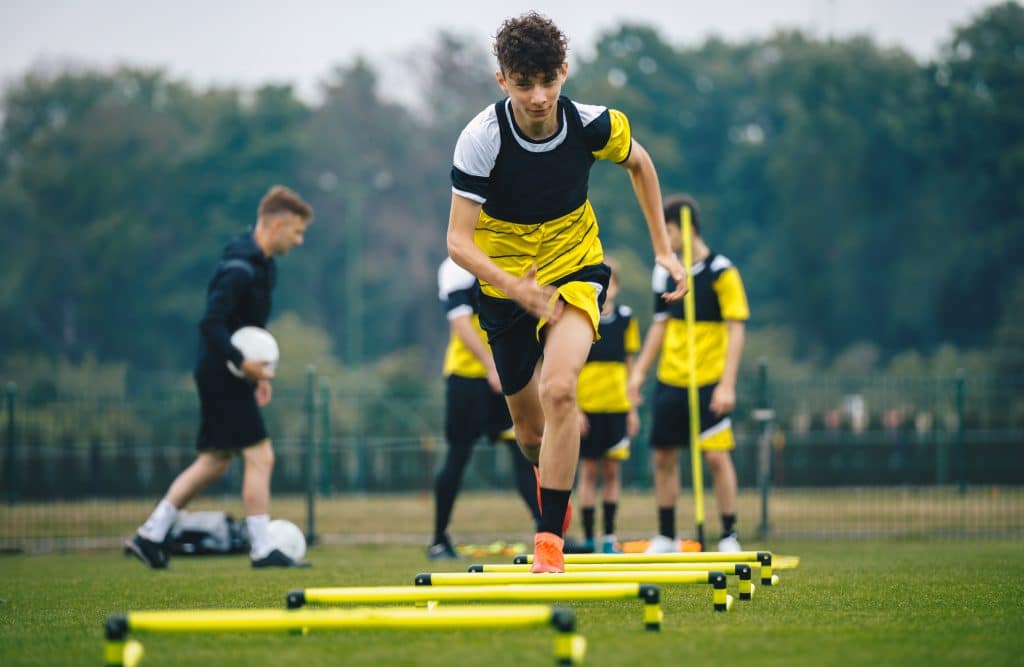
Image 6. Source
Sprinting and agility drills are exercises that involve running and quick changes of direction, such as sprints, shuttle runs, and ladder drills. These exercises not only enhance speed and agility, but also aid in the development of strength and power in the lower body. Incorporating sprinting and agility drills into your routine can help activate and strengthen your fast-twitch muscle fibers for improved athletic performance.
A recommended sprint workout for activating fast-twitch muscle fibers involves performing 20-second sprints followed by 40 seconds of walking, repeated ten times. This high-intensity workout helps target fast-twitch muscles while also providing essential recovery time between sprints.
Remember to warm up properly before engaging in sprinting and agility drills to reduce the risk of injury.
Tips for Maximizing Fast-Twitch Muscle Development
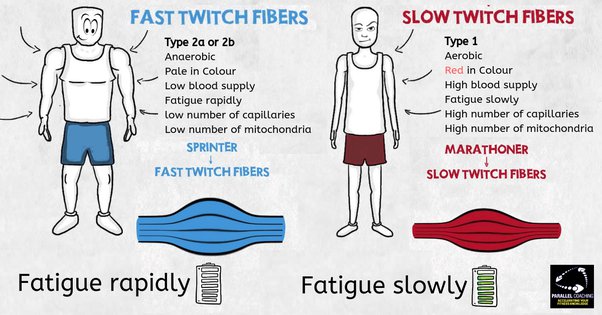
Image 7. Different between slow twitch muscle fibers and fast twitch muscle fibers | Source
To maximize your fast twitch muscle development, there are several key factors to consider in your training regimen. Proper warming up and stretching, maintaining a balance between intensity and recovery, and incorporating progression and variation in your workouts are all essential aspects of an effective fast twitch muscle training program.
By focusing on these factors, you can ensure that your body is ready for high intensity exercises and that your muscles are consistently being challenged for optimal growth and performance.
Warming Up and Stretching
Warming up and stretching are crucial components of any training routine, particularly when targeting fast-twitch muscle fibers. Prior to engaging in large movements during fast-twitch muscle training, it is essential to warm up the muscles and stretch thoroughly. This preparation not only enhances contractile speed, but also averts muscle injuries, augments blood flow and oxygen to the muscles, enhances efficiency of movement, and raises flexibility.
A proper warm-up should include dynamic stretching exercises that mimic the movements you will be performing during your workout. Incorporating these exercises into your warm-up routine can help increase your range of motion, prevent injury, and optimize your fast-twitch muscle development. It is important to refrain from slow twitch muscle warm ups like static stretching
Balancing Intensity and Recovery
Maintaining a balance between intensity and recovery is essential for optimizing fast-twitch muscle development and preventing injury. To achieve this balance, it is recommended to adjust the frequency and volume of training by performing low to moderate repetitions, taking 1 to 2 minutes of rest between sets, and allowing for sufficient rest and recovery time between high-intensity training sessions.
It is also beneficial to alternate between periods of high-intensity exercise and lower intensity recovery. By striking the right balance between intensity and recovery, you can ensure that your body is provided with enough time to recuperate between workouts, allowing for maximum performance and fast-twitch muscle development.
You can add in some endurance training to help your body recover. While you may develop some slow twitch fibers, they should go away quickly when high intensity workouts start up again.
Progression and Variation
Progression and variation are essential components of an effective fast-twitch muscle training program. By gradually increasing the intensity of your workouts and varying the exercises you perform, you can challenge your body and ensure that your muscles are consistently being pushed to their maximum potential, resulting in enhanced muscle development.
To maximize results when training fast-twitch muscles, it is recommended to lift heavy weights, perform quick movements such as sprints and jumps, and include Olympic lifts and plyometrics in your exercise regimen. Alternating between heavy compound movements and lighter, explosive movements can help provide the necessary stimulus for fast-twitch muscle growth and development.
Incorporating Fast-Twitch Muscle Training into Your Routine
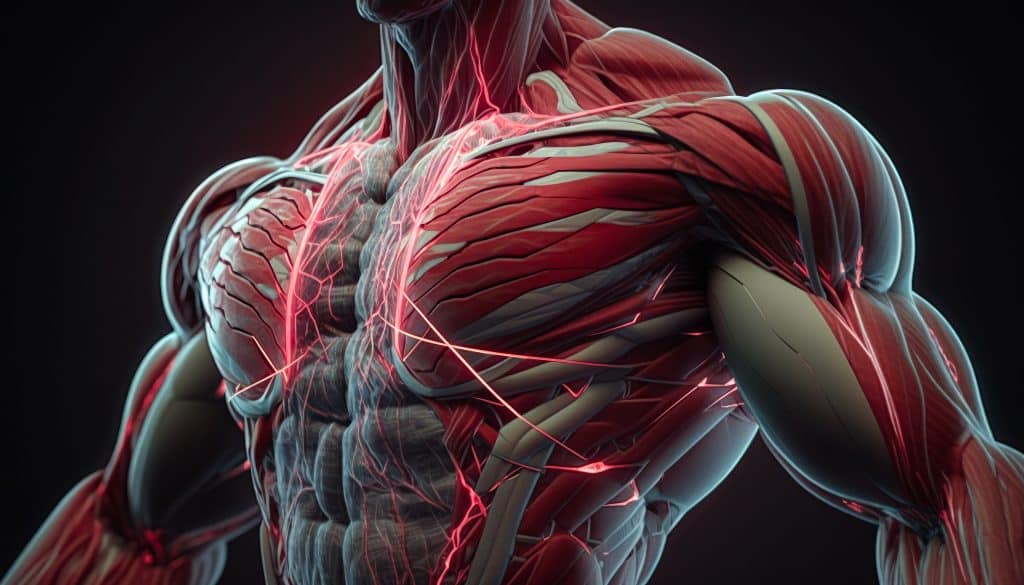
Image 8. Upper body of someone with strong fast twitch muscle fibers | Source
Incorporating fast-twitch muscle training into your routine should be done gradually and consistently to ensure optimal performance. Begin by introducing one or two fast-twitch exercises per week, focusing on proper form and technique. As your body adapts to the new training stimulus, gradually increase the frequency and intensity of your fast-twitch muscle training sessions.
It is also important to remember that developing fast-twitch muscles is not an overnight process. Like any other fitness goal, it requires dedication, persistence, and patience. By consistently incorporating fast-twitch muscle training into your routine and focusing on the key factors discussed in this blog post, you can unlock your body’s full potential and achieve impressive gains in power, speed, and agility.
Summary
In conclusion, training fast-twitch muscle fibers is essential for anyone looking to improve their power, speed, and agility in sports, fitness, or everyday life. By understanding the science behind fast-twitch muscles as opposed to training slow twitch muscle fibers will have a huge advantage. Especially if you want to be playing a particular sport for a long time. Fast twitch fibers create fast, explosive muscle fibers while slow twitch muscles are faitgue resistant and slow twitch.
Remember to warm up and stretch properly, balance intensity and recovery, and progress and vary your workouts for optimal fast-twitch muscle development. With dedication, persistence, and the right training approach, you can transform your performance and reach new heights in your athletic endeavors. It’s time to tap into the power of fast-twitch muscles and elevate your game to the next level!
Frequently Asked Questions
What exercises use fast twitch muscles?
Fast twitch muscle exercises include jump squats, box jumps, kettlebell swings, power cleans and back squats. These exercises help target and train fast-twitch muscle fibers for explosive strength and power.
Fast twitch muscles are important for athletes who need to generate quick bursts of power and strength. They are also beneficial for everyday activities such as lifting heavy objects, playing sports and running fast. By incorporating fast twitch muscle exercises you can expect to be a faster, more athletic version of yourself.
Can you build fast twitch muscles?
Yes, it is possible to build fast twitch muscles. Exercises such as sprinting and powerlifting can be effective in strengthening and building fast-twitch muscle fibers.
Regularly engaging in these activities and adding intensity to your workouts can help you build fast-twitch muscles.
How many reps for fast twitch muscles?
For fast twitch muscles, it is recommended to use low to moderate reps in the range of 4-8 reps with rest periods of 1-2 minutes and a moderate training volume. Most athletes want to increase the volume of their muscle fibers. In order to do that you should be increasing the weight you are using when lifting.
This type of training is beneficial for developing strength and power, as well as improving muscular endurance. It is important to note that the intensity of the exercise should be kept relatively high in order to maximize the benefits of this type of training.
How long does it take to activate fast twitch muscles?
Activating your fast twitch muscles is relatively easy and can be done by sprinting for 30 seconds or lifting heavy weights. Depending on the activity, it typically takes anywhere from 30 seconds to 20 minutes to activate fast twitch muscles.
Is it good to have fast twitch muscles?
Having strong fast twitch muscles can be very beneficial for certain activities such as sprinting, jumping, and lifting heavy weights. They also help to increase muscular definition, strength, and power.
Fast twitch muscles are an important part of staying healthy and fit, so it is definitely a good thing to have them.
Stay connected with news and updates!
Join our mailing list to receive the latest news and updates from our team.
Don't worry, your information will not be shared.
We hate SPAM. We will never sell your information, for any reason.

